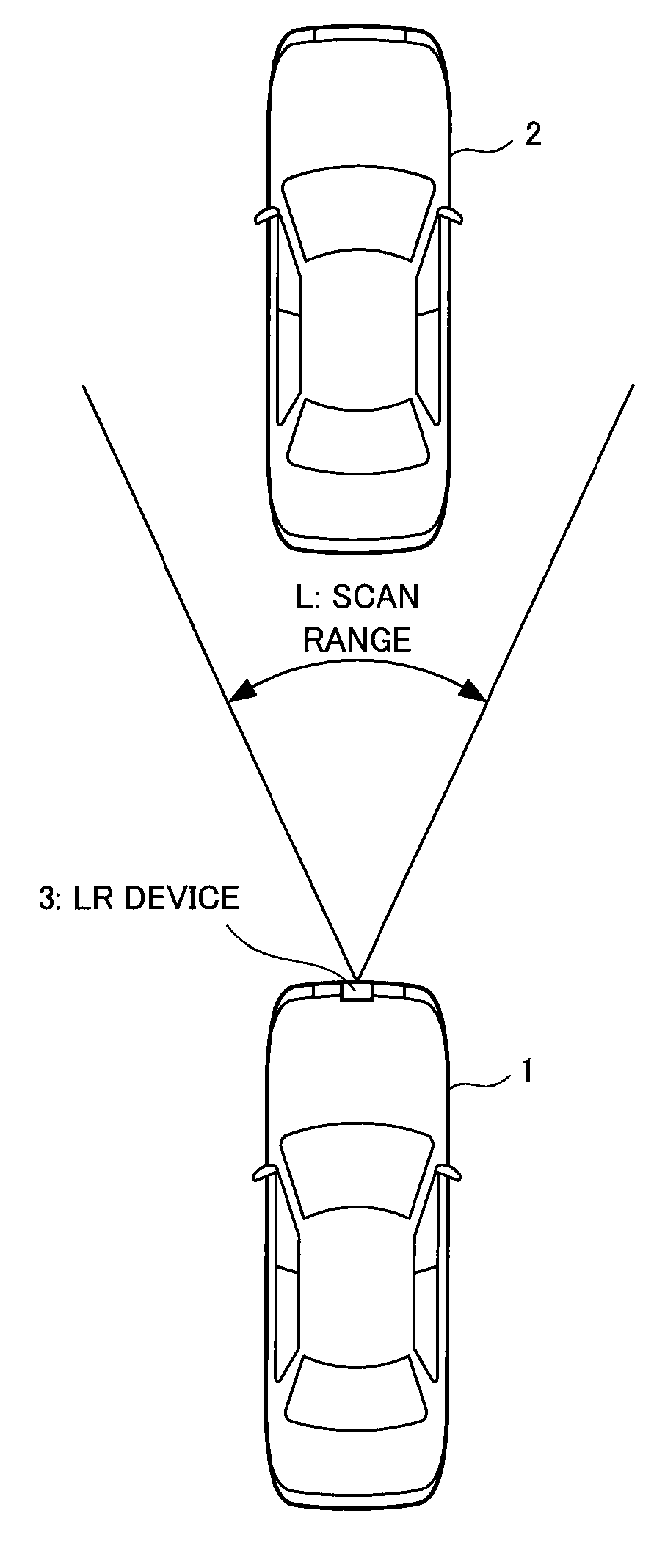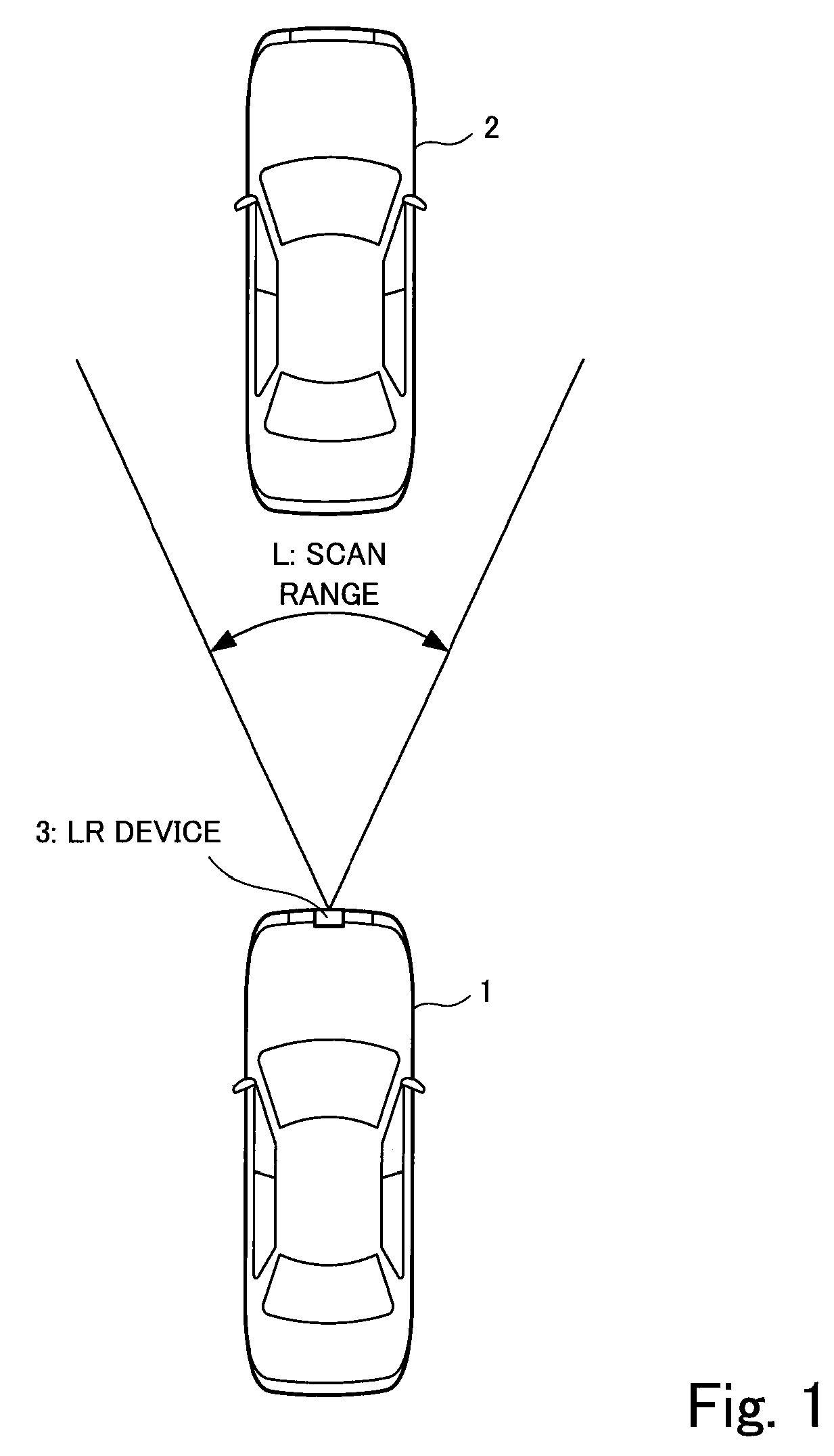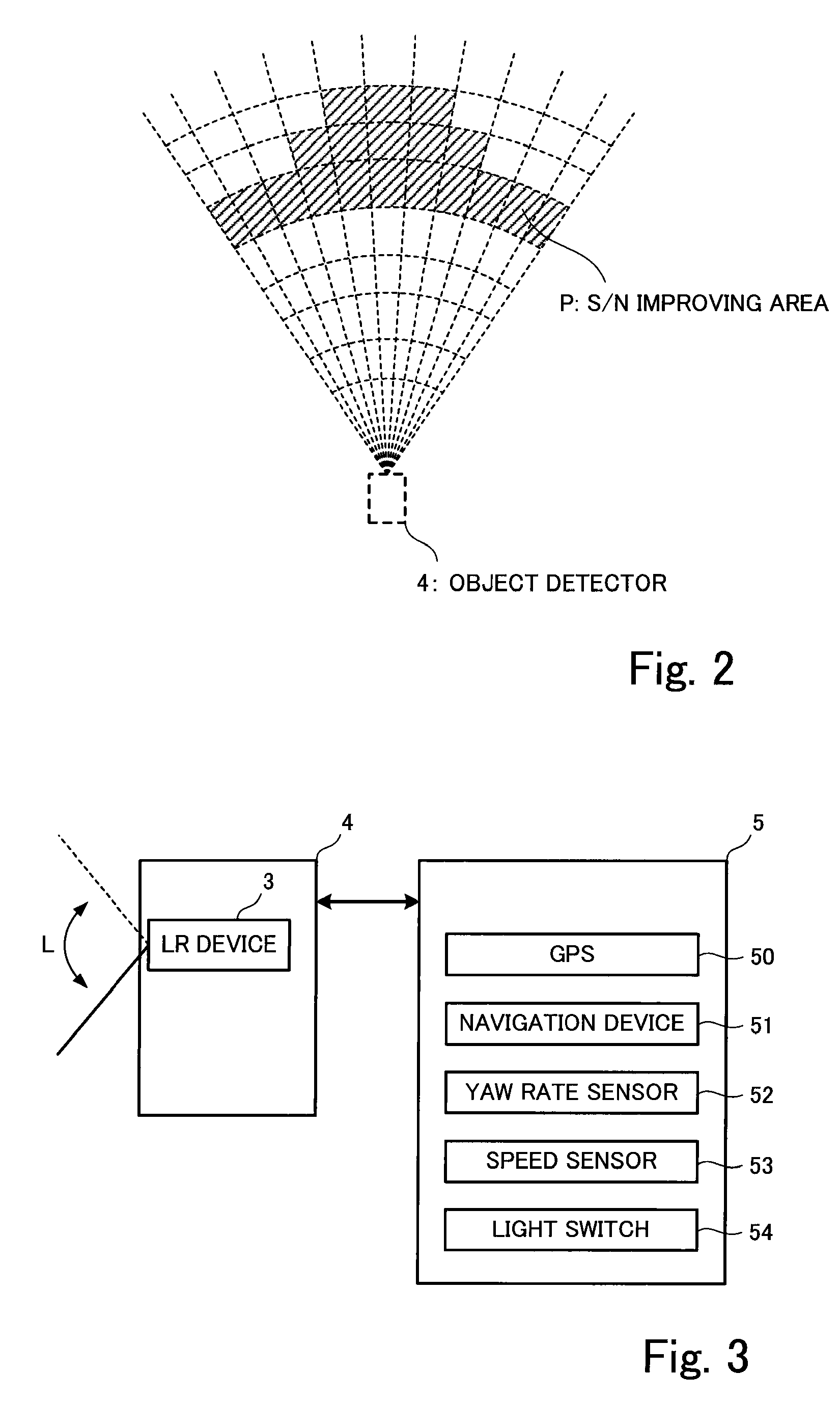Object detector for a vehicle
a vehicle and object detector technology, applied in the field of object detectors, can solve the problems of difficult to sufficiently eye injury, and hypersensitivity to electromagnetic waves, so as to prevent incorrect detection of objects, reduce the burden on the control part, and improve the s/n ratio
- Summary
- Abstract
- Description
- Claims
- Application Information
AI Technical Summary
Benefits of technology
Problems solved by technology
Method used
Image
Examples
Embodiment Construction
[0032]FIG. 1 shows a vehicle to which an object detector embodying this invention is mounted. Explained more in detail, it shows one's own vehicle 1 detecting a front going vehicle 2 by means of its object detector.
[0033]The object detector is provided with a laser radar device (hereinafter referred to as the LR device) 3 adapted to emit laser light which is a kind of electromagnetic wave beam. This LR device 3 is attached to the front part of the own vehicle 1 and serves to emit laser light forward and to scan a target area (or a scan area) L repeatedly and to receive at each scan reflected light from an object (such as the front going vehicle 2 in the example of FIG. 1) that may be present in front. Although the object detector will detect not only the front going vehicle 2 but also every objects that may be present in front, the front going vehicle 2 will be often mentioned as the example of object in front for convenience of description but it may sometimes be also referred to a...
PUM
 Login to View More
Login to View More Abstract
Description
Claims
Application Information
 Login to View More
Login to View More - R&D
- Intellectual Property
- Life Sciences
- Materials
- Tech Scout
- Unparalleled Data Quality
- Higher Quality Content
- 60% Fewer Hallucinations
Browse by: Latest US Patents, China's latest patents, Technical Efficacy Thesaurus, Application Domain, Technology Topic, Popular Technical Reports.
© 2025 PatSnap. All rights reserved.Legal|Privacy policy|Modern Slavery Act Transparency Statement|Sitemap|About US| Contact US: help@patsnap.com



